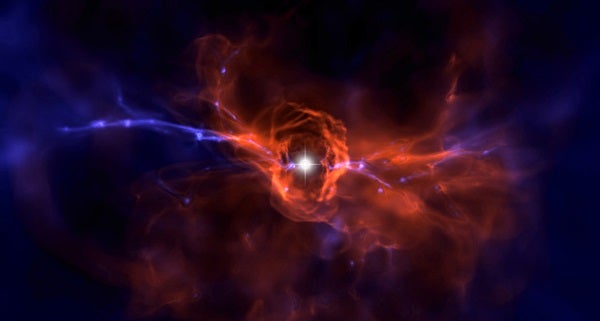The first stars in the universe, like that shown in this computer simulation, were likely objects with at least 100 solar masses. They burned through their primordial hydrogen and helium quickly and produced many heavier elements that they then spewed into space during their explosive deaths.
Visualization: Ralf Kähler, Tom Abel; Simulation: John Wise, Tom Abel
The universe’s first stars were dozens to hundreds times the mass of the Sun, similar in size to today’s supermassive stars. But these monsters died long ago — so far in the past, in fact, that astronomers cannot find them with their telescopes. Instead, scientists turn to computers to model the life cycles of these first stars and to learn how these behemoths’ short lives and explosive deaths impacted the environments around them.
Below is an example of one such simulation, which shows a first-generation star light up and influence its surroundings. The star’s hot ultraviolet radiation strips electrons off atoms in nearby material, ionizing the environment. Astrophysicists Tom Abel of the SLAC National Accelerator Laboratory in Menlo Park, California, and John Wise of the Georgia Institute of Technology in Atlanta created this simulation, and Abel and Ralf Kähler (also of SLAC) created the visualization.










